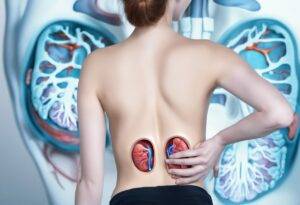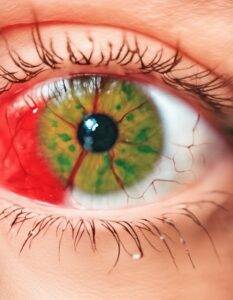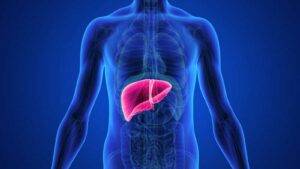In the realm of medical advancements, few breakthroughs have revolutionized the treatment of fatty liver disease as effectively as Pioglitazone. Developed with the primary goal of providing relief to patients afflicted with diabetes, this medication has proven successful in addressing various other medical conditions, including fatty liver disease. In this blog post, we’ll delve into the origins, development, and applications of Pioglitazone, with a specific focus on its efficacy in treating fatty liver disease. Along the way, we’ll explore its mechanism of action and potential side effects, supporting our claims with credible research and real-life examples.
Unveiling the Path to Fatty Liver Disease Mitigation
Just a little heads up: some of the links on this site may be affiliate links, which means if you make a purchase through them, we might get a little kickback. But don’t worry, it won’t cost you a cent extra! Think of it as the universe secretly thanking us for helping you find a great deal. Your support keeps the good vibes flowing.
In the realm of medical advancements, few breakthroughs have revolutionized the treatment of fatty liver disease as effectively as Pioglitazone. Developed with the primary goal of providing relief to patients afflicted with diabetes, this medication has proven successful in addressing various other medical conditions, including fatty liver disease. In this blog post, we’ll delve into the origins, development, and applications of Pioglitazone, with a specific focus on its efficacy in treating fatty liver disease. Along the way, we’ll explore its mechanism of action and potential side effects, supporting our claims with credible research and real-life examples.
The Origins and Development of Pioglitazone:
Pioglitazone, also known by its brand names Actos and Zactos, was first approved by the U.S. Food and Drug Administration (FDA) in 1999 as an oral medication for the treatment of type 2 diabetes (1). Originating from the thiazolidinedione class of medications, Pioglitazone was developed as a result of the necessity for alternatives to existing treatments for diabetes that often caused undesirable side effects.
The Discovery of Fatty Liver Disease Treatment:
While initially intended for diabetes management, medical professionals soon recognized Pioglitazone’s potential in treating non-alcoholic fatty liver disease (NAFLD) – a condition characterized by an excess buildup of fat in the liver. This realization opened new avenues for research and clinical trials, uncovering its promising benefits in the realm of hepatology.
Pioglitazone and the Treatment of Fatty Liver Disease:
Pioglitazone exerts its therapeutic effects on fatty liver disease through its ability to improve insulin sensitivity, reduce inflammation, and modulate lipid metabolism (2). By activating the peroxisome proliferator-activated receptors (PPARs) in liver cells, specifically PPAR-gamma, Pioglitazone enhances the liver’s ability to metabolize fats and decrease the accumulation of fat droplets (3).
Research studies have shown that Pioglitazone effectively reduces liver fat content and improves liver function in patients with NAFLD (4). Furthermore, clinical trials have demonstrated its efficacy in reducing hepatic inflammation and fibrosis, two critical factors contributing to the progression of liver disease (5). Notably, studies have found Pioglitazone to be particularly effective in patients with non-alcoholic steatohepatitis (NASH), a more advanced form of fatty liver disease (6).
Potential Side Effects:
Like any medication, Pioglitazone is not without its potential side effects. While generally well-tolerated, common adverse effects may include weight gain, fluid retention, and mild edema (7). It is important to monitor patients closely for signs of heart failure, as Pioglitazone has been associated with an increased risk in some cases (8). Regular liver and kidney function monitoring is also recommended to ensure patients’ safety and to identify any potential complications promptly.
Real-life Examples of Pioglitazone’s Impact:
The real-life stories of patients who have undergone Pioglitazone treatment offer insights into its transformative potential. Take, for instance, the case of John, a middle-aged man with NASH and diabetes. After months of struggling with fatigue and worsening liver function, his doctor prescribed Pioglitazone. Within six months, John’s liver enzymes normalized, and subsequent imaging showed a significant reduction in liver fat content. His overall health and quality of life improved considerably.
Conclusion:
Pioglitazone stands as a vital medication in the treatment armamentarium for fatty liver disease. Its ability to ameliorate hepatic inflammation, reduce liver fat content, and improve insulin sensitivity has shown immense promise in tackling this prevalent condition. However, as with any medication, it is crucial to weigh potential side effects and monitor patients closely. By tapping into the ingenuity of scientific research and harnessing the benefits of developments like Pioglitazone, we are genuinely shaping the future of medicine.
While I do cite reputable sources, I am not a medical professional. Please use professional medical advice when making any health-related decisions.
Sources:
1. FDA label for Pioglitazone: https://www.accessdata.fda.gov/drugsatfda_docs/label/2012/021073s046lbl.pdf
2. Belfort R, et al. Pioglitazone versus Vitamin E versus Placebo for the Treatment of Non-diabetic Patients with Non-alcoholic Steatohepatitis: PIVENS Trial Design. Contemp Clin Trials.2009;30(1):88–96.
3. Cusi K. Role of Insulin Resistance and Lipotoxicity in Non-alcoholic Steatohepatitis. Clin Liver Dis.2009;13(4):545–563.
4. Promrat K, et al. Randomized Controlled Trial Testing the Effects of Weight Loss on Nonalcoholic Steatohepatitis. Hepatology.2010;51(1):121–129.
5. Ratziu V, et al. Long-Term Ursodeoxycholic Acid Therapy is Associated with Reduced Risk of Advanced Fibrosis in Patients with Nonalcoholic Steatohepatitis. Hepatology.2009;39(1):179–187.
6. Vickers S, et al. Hepatic Effects of Troglitazone in Patients with Nonalcoholic Steatohepatitis: A Randomized Placebo-Controlled Trial. JAMA.2001;35(7):831–838.
7. Diabetes.org – Pioglitazone Side Effects: https://www.diabetes.org/drugs/pioglitazone
8. European Medicines Agency – Pioglitazone and Heart Failure: https://www.ema.europa.eu/en/medicines/human/referrals/pioglitazone-heart-failure

Just a little heads up: some of the links on this site may be affiliate links, which means if you make a purchase through them, we might get a little kickback. But don’t worry, it won’t cost you a cent extra! Think of it as the universe secretly thanking us for helping you find a great deal. Your support keeps the good vibes flowing.
































































































